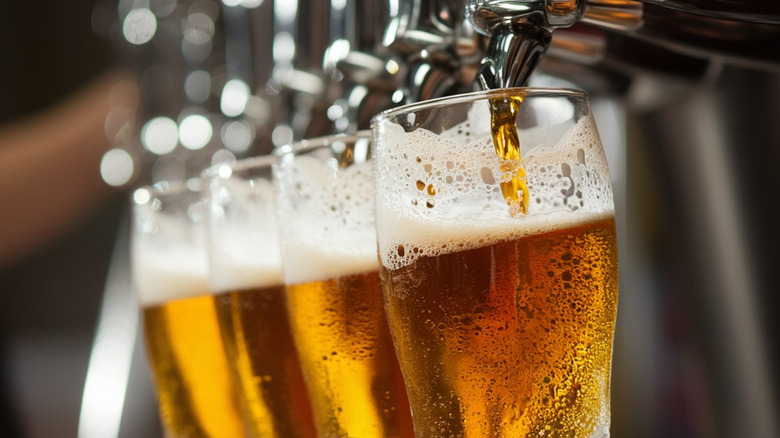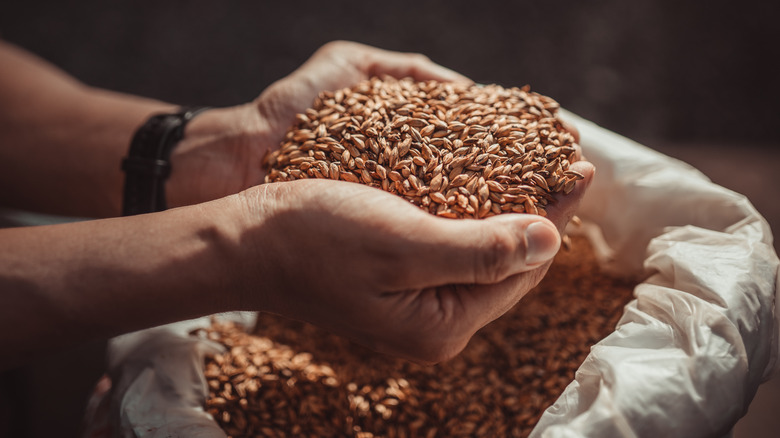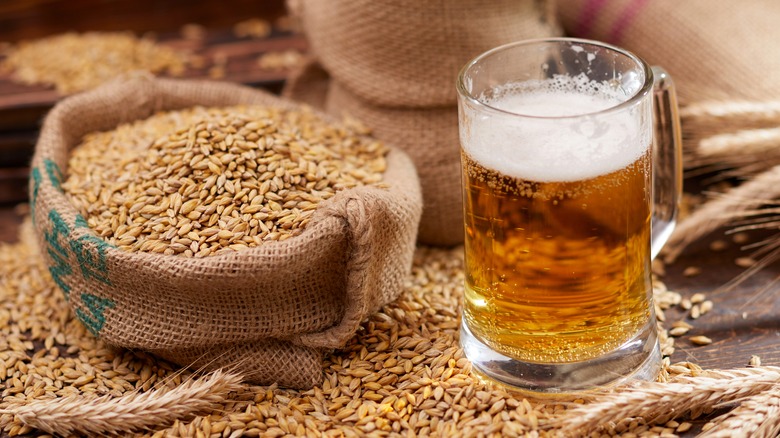What Does Malted Barley Have To Do With Beer?
With the rise in local craft beers and double IPAs, there's plenty of talk about hops, but discussion of malted barley is often secondary (if it's had at all). Both hops and barley have a notable effect on the finished product, but the barley is what's truly essential to most beers. The fact that today's conversations around beer focus on the hops is likely to do with the fact that small breweries are more hands-on with this ingredient. Processing barley takes time and space, so a lot of craft breweries will buy in malted barley that has already been processed for particular styles.
How exactly the barley is malted can change how the beer ends up, but however it's processed, it defines most of the key aspects of the beer. It provides the color, the proteins that keep a head on the beer, and the rich flavor. It's also a source of sugar which, when combined with yeast, is what allows fermentation to happen, producing alcohol. Hops, on the other hand, are what add the more bitter flavors and aromas that balance the final brew.
How barley becomes malted for beer brewing
After barley is harvested, the grains are dried for storage. When malting the barley, the process begins by taking those grains and soaking them in water for a couple of days to get them ready to be germinated. The grains, which are seeds, need to be kept at around 60 F and aerated so that they can sprout (not unlike how you would grow a chia pet). As it begins to sprout, the starch in the barley is converted into sugar which will later feed the yeast.
Before the grains can sprout too much, they're heated to halt the growing process. At temperatures above 120 F, the barley malt is then kilned, with the specific temperature defining how dark the eventual malted barley will be — this is what determines whether the finished beer will be light or dark. Barley kilned at low temperatures will produce pale ales, while at the other end of the spectrum, higher temperatures will produce dark beers like stouts and porters. That malted barley can then be further roasted after kilning to give additional richness of flavor.
Are all beers made from barley?
Historically, all beers were once made with barley. It was the traditional grain used and, after prohibition, the Bureau of Alcohol, Tobacco, and Firearms (ATF) introduced regulations to control the ingredients that could be used in beer. This was in the wake of a peak in unregulated alcohol production during prohibition years. By the ATF's ruling, at least 25% of the grain in beer had to be barley, even if other grains are used alongside it — Budweiser, for instance, is brewed from a combination of barley and rice.
However, that definition of beer has since been expanded, and we have the rise in understanding of gluten intolerances to thank for it. Back in 2006, the head brewer for Lakefront Brewery in Michigan sought to make a beer his gluten-intolerant father could drink and, after brewing gluten-free beer, he was able to get the United States' definition changed to allow other grains. Now you can find American beers that are fermented without barley at all, instead using a variety of other grains such as sorghum, rice, millet, and corn.


